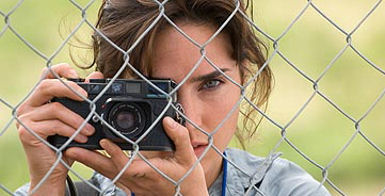“Directors have started to manipulate actors’ performances in post-production,” wrote Times Online Arts Reporter Ben Hoyle about two weeks ago. “Modern visual effects technology allows them to go beyond traditional cosmetic changes, such as removing wrinkles and unsightly hairs, and adjust actors facial expressions and subtly alter the mood of a scene.

Case in point: Ed Zwick‘s decision to add a teardrop to Jennifer Connolly‘s cheek as she’s speaking — SPOILER! SPOILER ALERT! — to the dying Leonardo DiCaprio at the end of Blood Diamond. At a Visual Effects Society conference in Los Angeles in early January, says Hoyle, chairman Jeff Okun showed before and after versions of the scene in question.
“In the ‘before’ shot Connolly was shown talking on her mobile phone. The digitally manipulated ‘after’ shot showed her talking on her mobile phone with a tear rolling down her cheek. Such alterations are becoming increasingly common, but practitioners are discouraged from discussing this work.
“Acting is all about honesty, but something like this makes what you see on screen a dishonest moment,” said a leading technician. “Everyone feels a bit dirty about it.”
As Werner Herzog has proclaimed over and over, nobody trusts their eyes when they go to a film any more. Adding tears and whatnot — and particularly people knowing that this is happening more and more — is only going to intensify this feeling. It’s the dramatic-emotional equivalent to the practice 50-plus years of adding laugh tracks to TV sitcoms.
“Visual effects experts privately admit to changing actors’ expressions: opening or closing eyes; making a limp more convincing; removing breathing signs; eradicating blinking eyelids from a lingering gaze; or splicing together different takes of an unsuccessful love scene to produce one in which both parties look like they are enjoying themselves.”









